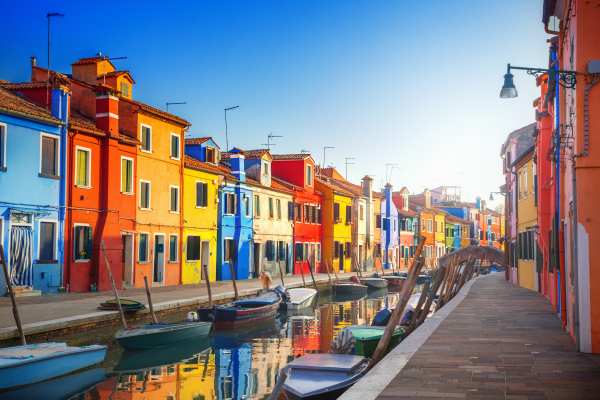Europe, the Locals’ Way: How to Travel in Europe to Avoid Tourist Crowds

As the world continues its post-pandemic travel rebound, you may be planning a trip yourself, and, like many other people, perhaps your travel plans include Europe. After all, there are plenty of reasons to visit. The weather is generally mild and pleasant. The cities are colorful and filled with history, with many European cities showcasing centuries-old buildings and architecture that make them unique and beautiful. And towards the top of most lists are the gastronomical delights you’ll find, just about anywhere you go: artisan pastry and breads, local cheeses and charcuterie, gelato, wine and more!
With all these attributes, it’s normal that many people want to tour this part of the world, making most tourist attraction sites crowded. But did you know you can avoid tourist crowds and enjoy your European trip? Keep reading to find out how.
Tips for Planning a Trip to Europe to Avoid Tourist Crowds
If you’re planning a European trip, you’ve probably considered visiting some of the continent’s most popular destinations. But what if you want to avoid crowds? Are there other places you should consider?
Here are some tips for planning a trip to Europe that will allow you to avoid tourist crowds:
Choose Neighborhoods That are Off the Beaten Path
You might think visiting Venice or Paris would be impossible without crowds, but not all neighborhoods are as busy as many people think. Both cities have plenty of accommodations and restaurants that are just as good as those in more tourist-filled areas. Going off the beaten path, you’ll discover hidden gems and lesser-known attractions that will make your trip more enjoyable. You’ll probably also meet more locals, and may experience the truer flavor of the city.
Don’t Plan Your Trip During Peak Season
If you’re considering a summer vacation to Italy or Spain, consider booking at least six months ahead because it can be difficult to find a room during the high season. To enjoy fewer crowds, you may want to consider traveling during the winter (December through April). And don’t expect much snow or cold weather; Italy and Spain are great destinations to visit year-round.
Don’t Rely on Train Tickets Alone
If you want to avoid crowds during peak travel times, don’t rely on train tickets alone; instead, find other means of travel. If you plan, getting train tickets well in advance with little wait time before departure is possible. However, you may also find that there are regional flights available between European cities that are cheaper than train tickets. If you’re feeling adventurous, you can rent a car and drive, giving you added flexibility (and more stories for the memory books!).
Stay Away From Tourist Sites
Try and stay away from tourist sites if they’re too busy or crowded. If you must visit popular sites, try to arrive early in the morning or late in the afternoon when fewer people are there. As for accommodations, you may consider booking a private AirBnB as opposed to popular hotels that might be swarming with tourists.
Go to Lesser-Known Attraction Sites As Opposed to the Popular Ones
Many tourists flock to their favorite spots to get the most out of their time abroad. But if you want to avoid tourist crowds, don’t go where everyone else goes. Instead, go where they don’t go and experience something new and exciting. (Pro Tip – is the site super popular on Instagram? Then there’s a good chance it’s over-crowded. Find a new and more original spot to take your photos!)
While there’s no substitute for seeing some of Europe’s most famous landmarks, like The Louvre or The Eiffel Tower, there are plenty of other amazing sites that you may not have considered visiting.
For instance, some castles and gardens aren’t as well known. You may also find great museums, galleries, churches that hold artifacts from all over Europe, or even the fascinating medieval village of Carcassonne in southwest France.
Hire a Private Local Guide
Private guides can save you time and money by helping you navigate museums or shows. They can also give you insight into what makes each city unique and special, which may not be obvious from reading a guidebook or website. They can also help with transportation options or make reservations at less crowded restaurants.
Avoid the Free Hours
Many cities in Europe offer free tour hours. These are usually crowded, and you must explore at the pace of a guide and crowd. Plan your visit accordingly. You can do other sight-seeing (or just strolling) during the free hours and visit the site after the free time. Sure, you’ll have to pay the admission fee, but some might argue it’s a small price to pay for a better experience at the museum or other site.
Secure Your Trip With a Travel Insurance Plan
Traveling to Europe is the experience of a lifetime, but throngs of tourists in some of Europe’s hot spots can put a damper on the fun. Take these tips to travel smarter and maximize your experience.
Travel insurance protects you against unforeseen circumstances such as a change in your itinerary due to sickness or accidents, the bankruptcy of the cruise company, or trip cancellation for a variety of reasons.
If you lose your checked baggage, passport, or other documents during your travels, your travel insurance may reimburse you for additional covered expenses you may incur due to these losses. In other instances, you may fall ill or require medical attention during your trip. In that case, your insurance plan may cover your medical expenses.
Numerous benefits make travel insurance a no-brainer during your trip to Europe. Therefore, any time you travel, don’t forget to protect your trip investment, and yourself, with travel insurance. Visit travelinsure.com today to learn about plans for your next trip and to get a free quote.







